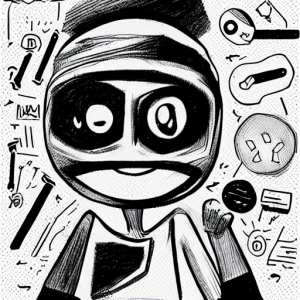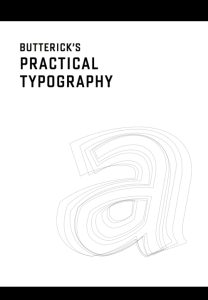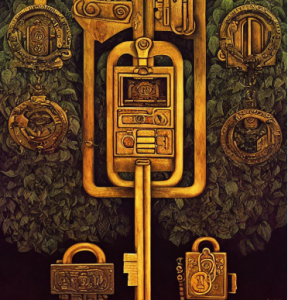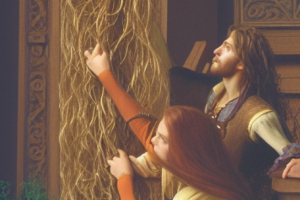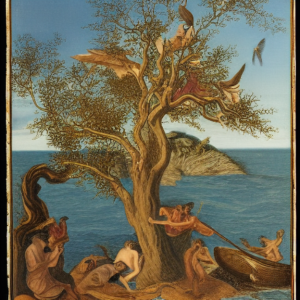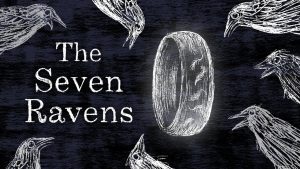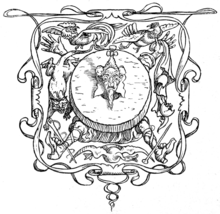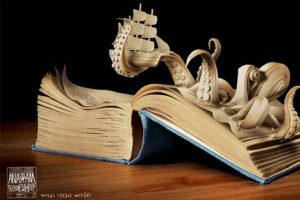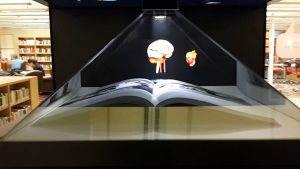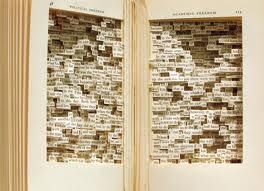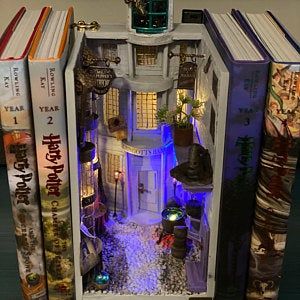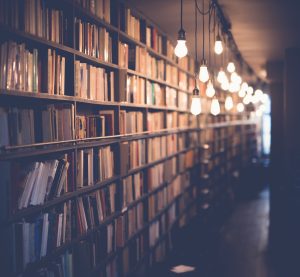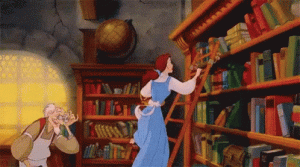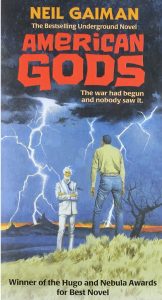My role as a multimedia designer is going in a different direction this week. I chose to put myself more in the code of the single works pages and the copy-editing side with hierarchy design. This switch to a different role breaks apart my last role in multimedia design from Fear of Coding. I now have an opportunity to review how type is published on a page and get to know margins and headings a lot better. I am more excited about this switch also as it goes better with my superpower. Here is where my personal wireframe stands.
Author: Jessica Grubbs
Salmon Creek Journal Responsibilities
For Salmon Creek Journal publication, my role is multimedia design and wireframing. The journal will follow the trends of current publications. Things that I have been adding were simple wireframes and a few color palettes chosen that showcase the school and the program in which the artists are based. In rolling with that same theme of bright trendy design, here are a few inspirations I gathered.
List of inspirational journals:
https://artsandculture.google.com/partner
https://artjournal.collegeart.org/
https://wexarts.org/exhibitions
https://taragallery.org/artists/
Color palette options:
Font Options:
By: Jessica Grubbs
Fear of Coding Multimedia Contribution
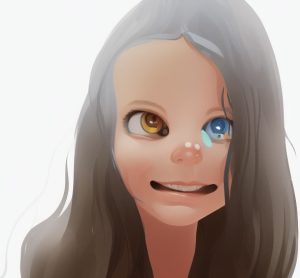
When reflecting on this short multimedia project, I had several takeaways I want to highlight. Learning to code is a personal journey much like taking a leap of faith into the unknown. When you decide to code, you have to get dirty with it. It has to be done in a way only you could understand. That might be terrifying or exciting to the student who lives to tell the tale but the rewards are great. It’s a versatile art that anyone could teach themselves to work with. With that said, we never stop learning. Languages are constantly updated and that is the fun of taking on this journey. You are always going to improve if you put in the work.
For my specific contributions to the published multimedia project, I brainstormed with my team and came up with different story lines. We originally had come up with a form of ASCII art to compliment the story but found that it only made coding look that much more intense and not attractive. For the DTC program, we do invest much time and energy into learning the very basics of front-end development.
My main contribution involved the artistic elements on the pages with the illustrations. I specifically want to mention AI image generation and how that came about. Within the stable diffusion plugin of Photoshop, I discovered what “seed” meant and how to make a prompt. Seed means a generation of images that are related to the image you have chosen. The prompts had to be specific in such a way to tell the system what you are hoping to get out of your generator. Not all the time did I get what I was hoping. The downside with stable diffusion was the cost I had to pay. Twenty dollars for a number of image generations. Those included the amazing selfie generations I was able to send to my team. They can now be reused in any project they want. Downside, I spent the credits quicker than I had intended. On the bright side, I discovered Canva has a free beta AI text prompt generator. It does have a limit per day but the upside was that I had found a style of doodle that I wanted to use for the multimedia project. I have so many saved generations on my local computer that were beautiful and detailed. Hence the price of stable diffusion but for this specific project, Canva was able to work.
Typography Design and The Multimodal Project
“But as professional writers, we do more than write. We edit, we format, we print, we generate PDFs, we make web pages. More than ever, we’re responsible for delivering the written word to our readers. So we’re not just writers—we’re publishers.” (Butterick)
For this week’s blog prompt, I was amazed at the information in Butterick’s Practical Topography. Typography is very much a key component in everyday digital and print text. For this reason, I want to cover the key topics. “Good typography is part of good writing.” (Butterick) You cannot have one without the other. From type composition to text formatting and font choices, typography is a skill set that takes practice. For the multimodal project, typography is based entirely on both image and text. ASCII art is a typographical placement in strategic areas that cover different shadows within the picture.
Since “most readers are looking for reasons to stop reading,” (Butterick) the writer and publisher must make certain that typography holds the attention and makes reading easier. This involves less concentration on trying to understand mechanics and more focus on deep literacy. Eyes are more drawn to attractive designs which covers Butterick’s second law of typography, the law of judgement based on substance of material. For the multimodal project, beauty of design typography carries the character throughout the story and how he overcomes he/her fear of coding. The background ASCII is how our characters move through the environment. I am still exploring the use of animated ASCII and how the law of typography and design draws on the movements of the character.
Podcasts and such…
My favorite Video Blogger
Angela Braniff is a YouTube blogger who uses her videos to educate moms with traditional family values. She covers topics such as homeschooling, daily routines, housekeeping, culinary, holidays, and raising young children. I find that if I can relate to a community of followers, then its time well spent on YouTube. Influencers She is effective in drawing in subscribers with camera lighting, camera angles, voice over, and smooth transitions between scenes. Each video is organized in chapters and is easy to reference. Also, Angela’s logo is visible in the video on the bottom right corner to brand her channel. This makes a statement when your publishing content. Supporting small business as an entrepreneur is important to me. She makes a fair number of new videos every week that will review products and how-tos. I also follow podcasts that center around web development and gardening. There is so much information available in audio that makes podcasts better than written text. Saves on time and energy.
When it comes to podcasting, global ideas are better shared. They are an effective means of being able to engage media while multitasking. That is where podcasts have an advantage over YouTube blogs. Audio publishing if done the right way inspires the audience. They have a way of looking at different viewpoints into others’ lives while also avoiding media bias. Certain ASMR or meditation videos coupled with calm audio has a large market. I personally use white noise videos to fall asleep. I also use podcasts while working out when I get bored of the same playlists.

New Art of Making Books
“This is not to say that a text is poetry because it uses space in this or that way, but that using space is a characteristic of written poetry.” (Carrión)
The space in which our story interacts plays a pivotal role in how the audience understands the hero’s journey. It will navigate in such a way as climbing a hill and then falling off a cliff. When we learn a new coding language, there is inevitably a mental block that someone must fight through. That block causes long pauses in practice time. It is likely hard to get back to where you were before. The phrase rings true. Use it or lose it. The road traveled is often narrow, rocky, and full of bugs. No pun intended. For the media design, ASCii often uses spaces in between characters that illustrate pictures. Emerging in the late 1970’s early 80s with bulletin board systems. These pictures are somewhat poetry in a sense built around 128 perfectly monospaced characters.
Ascii art of Marshall McLuhanby Jessica Grubbs
The “space” is also in the way the character falls about into code blocks in almost a comic book fashion. The journey of a self-taught programmer moves in a sequence of common events that likely happen from the fear of coding or just the burnout. From HTML and CSS to JavaScript and its many frameworks, once a programmer sticks to their goals and puts in the umpteen hours of practice, will it finally click. This sequence of spaces turned into events will illustrate the feelings programming students all come to face.
Hayles Review
“Deep attention, the cognitive style traditionally associated with the humanities, is characterized by concentrating on a single object for long periods (say, a novel by Dickens), ignoring outside stimuli while so engaged, preferring a single information stream, and having a high tolerance for long focus times.” (Hayles)
Hyper-attention is important when talking about screen reading in a sense that distractions are inevitable. Every device has multiple capabilities that enable the reader to interact with an outside source. We have grown accustomed to the ability to multitask. Not always as efficient or detailed as we need to be but nonetheless, we survive. With today’s screen reading broadly being web based on a device that has active notifications, we do not share the same type of focus as do the older generations.
Essential parts of text today evolve around the technology or medium in which we read. Hyperlinks and interactivity are expected and used in modern learning environments because it gives the reader a deeper understanding of the text. When focusing on a task that involves deeper attention, such as reading music, all distractions seem to fade out.
With web and mobile devices being the primary medium of a text book, I’ve developed the habit of scanning more effectively than I would a physical book. Physical textbooks come with study guides, margin notes, bullet points, and review questions. As a digital textbook, you get all of that plus added audio and visual elements. The text is also a means to link to other resources rather than walking into a library and checking out a book.
–Quick story
The analogy I thought of when reading this essay. When you’re driving in a car with the music up loud. You are lost and decide to turn down the volume to find your destination. You immediately go from hyper-attentive to deep-attentive.
Hayles, N. Katherine. “Hyper and Deep Attention: The Generational Divide in Cognitive Modes.” Profession, 2007.
Filled to the Brimm with Grimm (epub)
Halloween Blog Stories
https://www.gutenberg.org/files/5314/5314-h/5314-h.htm#chap09
Grimms’ The Seven Ravens
The Grimm tale is about a couple who longs for a daughter but after 7 sons, they finally give birth to a “sickly” baby girl and end up cursing the sons while turning them into Ravens. The father was afraid that his daughter would die without getting baptized because the sons took too long when asked to fetch water. Not the happiest of endings.
https://www.gutenberg.org/files/5314/5314-h/5314-h.htm#chap41
Grimms’ Herr Korbes
Herr Korbes is about a troop of would be assassins that jump on a carriage while picking up some extra help along the way. It starts out really calm and happy. Then the end is a comedic murder.
The Future of Digital Books
“The book as object, as content, as idea, as interface.” (Borsuk)
Picture it…Portland Oregon. It is the year 2050. We are beyond handheld mobile devices and are in a world of wearables. Audio books have been flourishing for decades but sadly, the physical form of a book has far evolved to more than a spine, two covers, and a handful of pages. Bookstores are few and far between. Libraries are now digital spaces that have saved the government valuable financial resources. Time to go down memory lane. Like Blockbuster, Barnes and Nobel is only but nostalgia to those who crave the touch and smell of a paper bound book. It is the world of portals for inside a bookstore draws in those curious of its endless knowledge between a cover sleeve. Digital readers continue to sell here but this space was made for those who relish the ambient light, soft music, and dark academia theme décor. A physical book meant solitude. A bit of peace from the outside world. An intimate relationship with the protagonist or antagonist of the story. A profound narrative in real time that pulls you from space to space. This was a book. Paper between two covers and a spine.
“From scroll to bound folio, books have indeed evolved. And like all things subject to evolution, they can face extinction.” -Garrett Stewart (Borsuk)
The book as a codex is no longer a physical device. Now it’s a projection of light and sound waves that convey digital content. Pixels form on a desk from a ring. The projection of pixels is now able to be manipulated like that of touchscreen but with no glass. It can be zoomed into or zoomed out of. Words can be animated and still legible. Letterforms go from left to right, top to bottom but in a continuous motion. Like a new age tickertape. 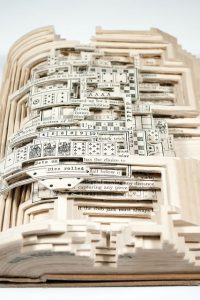 Products of our generation, the digital pages are condensed and easier to read. Since going digital, social media has taken the publishing world by storm. Digital books contain marginalia with real time commentary and dictation. The author is kept up to date on the progression of his/her works. It is even offered into the interface, the ability to add multiple endings. Such as those that you notice on a DVD menu. The alternative endings are to drive more discussion and communication about the timeline of events. Accessibility for digital books is also turning from audio with an option for interactive raised braille. The screen then morphs texture into the device itself.
Products of our generation, the digital pages are condensed and easier to read. Since going digital, social media has taken the publishing world by storm. Digital books contain marginalia with real time commentary and dictation. The author is kept up to date on the progression of his/her works. It is even offered into the interface, the ability to add multiple endings. Such as those that you notice on a DVD menu. The alternative endings are to drive more discussion and communication about the timeline of events. Accessibility for digital books is also turning from audio with an option for interactive raised braille. The screen then morphs texture into the device itself.
Modern wearables now come with book features. A book now looks and feels like a pair of glasses with audio or jewelry able to project its content onto a surface. A sleeve that functions as memory device that plays on acupressure points from the heart channel which in eastern medicine runs the side of the arm down to the pinky. 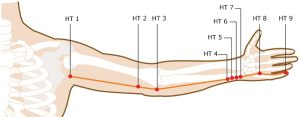 Words are not merely printed but are able to act on brain chemistry by means of certain frequencies that cause the brain to better enhance long-term memory. That frequency of 40 Hz correlates to better understanding of content. (Friedrich et al.) Using digital age technology, knowledge is then retained avoiding the dreaded “data dump” some may experience after reading extensive digital works. The brain receives content faster than ever before thus opening the possibility of leaning new languages. As far as text appearing, language and dialogue have changed due to the new publishing of content. The speed at which one retains the knowledge has allowed new languages to be understood. Being multilingual is now common and literacy is universal. Digital means of study are now available in every corner of the world.
Words are not merely printed but are able to act on brain chemistry by means of certain frequencies that cause the brain to better enhance long-term memory. That frequency of 40 Hz correlates to better understanding of content. (Friedrich et al.) Using digital age technology, knowledge is then retained avoiding the dreaded “data dump” some may experience after reading extensive digital works. The brain receives content faster than ever before thus opening the possibility of leaning new languages. As far as text appearing, language and dialogue have changed due to the new publishing of content. The speed at which one retains the knowledge has allowed new languages to be understood. Being multilingual is now common and literacy is universal. Digital means of study are now available in every corner of the world.
After wearables, we discuss the physicality of a common E-reader device. The physical dimensions of E-readers back then were 6.9 × 4.9 × 0.32 in. Today, the ones that are not embedded into clothing are a common size of paper being 8 ½ “x 11” and sport a virtual keyboard display below the device on any hard surface. This size is beneficial to the social community interacting with the book. Digital screens are only growing larger and thinner every year. With that said, you can fold the device in half to accommodate mobility for the people whose purpose is portability. Speakers are located on both sides with the option for Bluetooth connection. Wi-Fi is enabled for connecting within the book. Memberships are offered to the audience through publishing companies that facilitate the content. More on this later but as we dive into the software contained in the device, we need to make sure the integrity of the book is not compromised. Books are not meant to fade into oblivion. They are treasures and should be treated as such.
“We will also consider contemporary approaches to digital reading that, rather than offering up a crystal goblet, invite us to trace our finger along text’s rim and make it sing: drawing attention to the interface to explore and exploit the affordance of the digital.” (Borsuk)
The world of an e-reader has evolved with smart technology. Think of a student. Like most of us, we rarely have the time to read for pleasure. What we read is often driven by our studies. Some of that time consumed by reading is also trying to absorb the text. Flashcards, notes, and memorization tools gather the purpose of why we read which is to learn. Introducing the reader device that now provides audio reading of the text. While it is reading the text, words are being highlighted for visual stimulation. After the reader completes the book, automatic spark notes are made available to review the material. 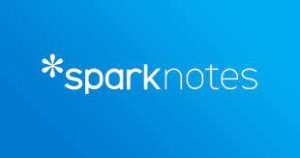 This immersive reading provides the reader with an experience that goes beyond the codex. The book itself can be a momentous feat. There are individuals who simply can’t stay awake to read or are engaged in other activities but need to finish a book fast. This immersive reading experience solves those problems. Another wave of technology has brought short mini scene animations to children’s books. The words are read and highlighted on the screen much like earlier technology, but the audience has short scenes to go along with the story. This also opens a whole new job market for artists and storytellers alike. Much different than film or tv series but shorts that last thirty to sixty seconds.
This immersive reading provides the reader with an experience that goes beyond the codex. The book itself can be a momentous feat. There are individuals who simply can’t stay awake to read or are engaged in other activities but need to finish a book fast. This immersive reading experience solves those problems. Another wave of technology has brought short mini scene animations to children’s books. The words are read and highlighted on the screen much like earlier technology, but the audience has short scenes to go along with the story. This also opens a whole new job market for artists and storytellers alike. Much different than film or tv series but shorts that last thirty to sixty seconds.
In these changing times, publishers are those digital content creators that collaborate with other artists and sites to get the readership up and running. The publishers that served thirty years prior are those that filtrate the material in the margins of the e-reader. They host discussions based on the popularity of certain topics and pre-moderate the content within the spaces of reader interaction. Content moderation is done in house or artificial intelligence based. In house would cost more than AI based but is also there to stimulate and inspire ideas from those who know the book best. 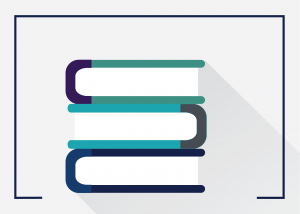 Discussions can be in the form of a question then move into real time chat. The interface is multifunctional giving the audience the benefit of having a book club right inside the screen.
Discussions can be in the form of a question then move into real time chat. The interface is multifunctional giving the audience the benefit of having a book club right inside the screen.
SCI FI BRAKE CHECK
The world is ever changing. Your health is of the utmost importance. You have tried and trusted the wearable devices that have made your life simple. You have experienced virtual reality and that of an E-readers immersive, smart, and active technology. You have seen the hologram images come out of the codex. Now science has come forward with evidence proving that blue light and radiation from these technologies is causing a decline in sight. Therefore, rejection of these technologies is imminent. The movement is profoundly changing the digital wearable future back into a physical art form using the beauty of the codex. Pages are now 3d. Holographic images are built inside “the book” coming from the spine. The covers now fold outwards to reveal art scenes from the story. Summaries are QR codes found on the sleeve. Future generations now come with much appreciation for the workmanship behind the codex and page turning is back on trend.
Ulises Carrion says, “A book is a sequence of spaces. Each of these spaces is perceived at a different moment-a book is also a sequence of moments. A book is not a case of words, nor a bag of words, nor a bearer of words.” (Borsuk) This only proves that a book is ever changing. It has come a long way from a cuneiform tablet to scrolls, from scrolls to codex, from codex to E-reader. Each device has its way of embedding itself into the culture of the period in which it was created. The author drives its narrative by ways of the medium it chooses. Today’s society craves technology that makes life more simplistic and more entertaining. The wave of knowledge must get easier to digest or absorb as time goes on. With falling literacy rates, reader tech must enhance learning devices to cater to its audience. We must fight to maintain the integrity of the book but have options to move forward in the not-so-distant future.
Works Cited
Borsuk, Amaranth. The Book (the MIT Press Essential Knowledge Series). Illustrated, The MIT Press, 2018.
Friedrich, Wernher, et al. “Studying Frequency Processing of the Brain to Enhance Long-term Memory and Develop a Human Brain Protocol.” Technology and Health Care, edited by Edward J. Ciaccio, vol. 23, no. s2, IOS Press, June 2015, pp. S465–71. https://doi.org/10.3233/thc-150983.
The 3 System Journey of Publishing
“The digital artifact, therefore, is a scaffolding between pre- and post- artifact systems” (Mod)
The scaffolding between two systems of written texts. One being physical and digital but more important, an experience being individual versus collective. Pre social media, a collective experience consisted of a chat room on a game site. That’s what I remember while playing online checkers. Grade school was about ask Jeeves which was founded in 1996. Two years later, Google was born. It was at this time that I was using hard copy encyclopedias because owning a computer in the nineties was for a higher tax bracket. My entertainment on a computer was pinball, spider solitaire, and mine sweeper.
“We own it, but yet, don’t.” (Mod) In my mind, not owning the physical copy of a book is much a letdown as not finishing it. I value the reminder of that book I read as a memento on my shelf. We need to research an idea for a reward system. Not only a kindle library but a way to record that personal journey between the reader and the text. Something tangible that is as meaningful as the codex.
Now entering the world of the “post-artifact system,” the scope consists of the functionality within the audience packaged with the collective text and its system of creators. We ask ourselves as digital publishers; what experience do you want to give the reader? A virtual book club? A question-and-answer session? A reader list of summaries or reviews? The possibilities are endless. Other aids for the reader might be outside the scope of the text itself but perhaps marginalia that could include an author’s commentary. Like a director’s cut but even better. For in the artifact system, the original manuscript is often changed to fit the publishers’ criteria. Only now, do we define our own limits for the book.
Mod, Craig. “Post Artifact Books and Publishing.” Craig Mod, craigmod.com/journal/post_artifact. Accessed 12 Sept. 2022.
The New Digital Age of Publishing
“To change the physical form of the artifact is not merely to change the act of reading… but to profoundly transform the metaphoric relation of word to world.” (Borsuk)
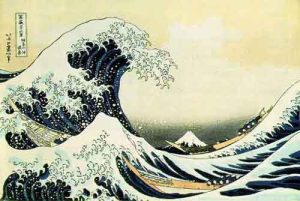
Digital publishing describes the transformation of book content to bytes of data. From that physical space of page turning or opening a portal, to a virtual space meant to draw connections between readers and authors. Audiences are tuning into the screen capabilities of books as a different kind of art form. This digital means of publishing could then invite the reader to use other forms of media or virtual reality to convey a message.
An example of an immersive digital experience could be that of choosing various options in a reader space that change how the narrative winds through different scenes. These options then feel more like a video game that captures audiences who find reading monotonous or boring, to enjoying the content being shared. This is sort of how artificial intelligence would “write” a book. This immersive experience is more a book of chance or a game of “would you rather?” This idea comes from the argument that there exists an “erosion of deep literacy.” (Garfinkle and Thomas) Digital space presents its own challenges of literacy absorption. I highly recommend “The Erosion of Deep Literacy” as a resource to help guide digital publishing in todays wave of constant distraction.
Another quote that had me pondering the books’ existence in digital form is from page 134. Stéphane Mallarmé states, “Everything in the world exists in order to end up as a book.” YES, and therefore every book exists in the world to drive the digital media that comes from the society in which we live. The lives that inspire the content and motivate the author to share with digital world. That is how the inspiration of film or digital media comes to life. Digital publishing then draws connections from content received from print to content transformed into art that is perceived by the audience.
Works Cited
Borsuk, Amaranth. The Book (the MIT Press Essential Knowledge Series). Illustrated, The MIT Press, 2018.
Garfinkle, Adam, and George Thomas. “The Erosion of Deep Literacy.” National Affairs, nationalaffairs.com/publications/detail/the-erosion-of-deep-literacy. Accessed 1 Sept. 2022.
Blog Post #2
American Gods by Neil Gaiman
Folklore: the traditional beliefs, customs, and stories of a community, passed through the generations by word of mouth.
Published in 2001, Neil Gaiman authored American Gods. A personal adventure from an outsider coming to America. No pun intended. He traveled the states and wrote about his adventure in the eyes of the protagonist, Shadow. Although not my favorite era or genre, this book is my absolute number one. It checks all the boxes. Adventure, romance, mystery, drama, science fiction, horror, and even comedy. All parts American folklore flow into the paper between the sleeves. The design of this edition opens with a letter from the author describing the publishing of this text written 10 years later. The cover sleeve being illustrated before the story gave the author inspiration for the book.
“What I say is, a town isn’t a town without a bookstore. It may call itself a town, but unless it’s got a bookstore, it knows it’s not foolin’ a soul.”
-American Gods
As a silent narrative, American Gods can pull a reader into the story as if you are living the characters life. Shadow is your typical American guy in the wrong place at the wrong time with the wrong people. The quality of this narrative is different in such a way that he captures memories through places and songs that instantly put you there. Urban legends surface reminding you of past stories your family would tell you around the campfire. These fictional scenes are historically accurate in the way Gaiman describes the introduction of diversity or the haphazard of meeting strangers on a plane.
Now turned into a series, I was able to read the book before watching it. In my opinion, the series captures the author’s goals and follows closely the timeline of events. For my personal journey with the book, I also built a playlist on Spotify that helped with mood setting. This book gave me respect for other cultures not known to myself both part fiction and part history believably true.
Intro
Hello. My name is Jessica. I took this class as a foundation into digital marketing and copywriting for small businesses.
 Landing
Landing Parallax selection
Parallax selection Works selection
Works selection content piece
content piece  footer area
footer area Poetry selection
Poetry selection

